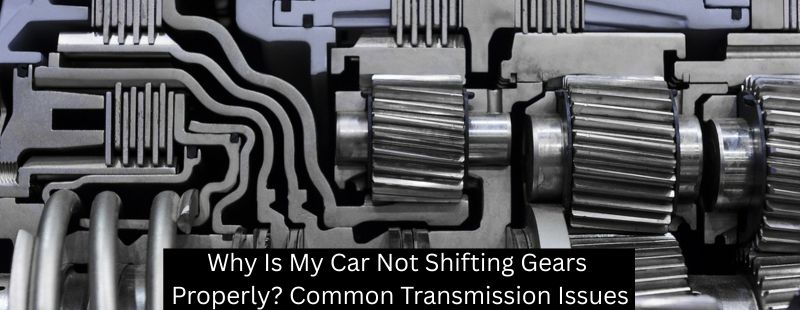Have you ever found yourself in a situation where your car refuses to shift gears‚ leaving you stranded and frustrated? You’re not alone! This perplexing issue plagues many drivers‚ but fear not! This complete guide will take you through the ins and outs of diagnosing and resolving gear-shifting problems in your vehicle. Buckle up as we embark on this informative ride!
Understanding the Basics of Gear Shifting
Before we dive into troubleshooting‚ let’s lay some groundwork. Understanding how your car’s transmission works is crucial. There are generally two types of transmissions:
- Automatic Transmission: Shifts gears automatically based on the speed of the vehicle.
- Manual Transmission: Requires the driver to shift gears using a clutch pedal and gear stick.
Both systems have unique components that can malfunction‚ causing shifting issues. Let’s explore the common reasons behind these dilemmas.
Common Causes of Gear Shifting Problems
1. Low Transmission Fluid
Transmission fluid is the lifeblood of your vehicle’s transmission system. If it’s low‚ your car may struggle to shift gears. Check for leaks or old fluid that needs replacing.
2. Worn Clutch (Manual Transmission)
For manual transmissions‚ a worn clutch can impede your ability to shift gears smoothly. If the clutch pedal feels spongy or goes all the way to the floor‚ it might be time for a replacement.
3. Faulty Transmission Solenoid (Automatic Transmission)
The transmission solenoid controls the flow of transmission fluid. If it malfunctions‚ it can lead to erratic shifting or an inability to shift at all. A diagnostic check can help identify this issue.
4. Electrical Issues
Modern vehicles are equipped with advanced electronics. A faulty sensor or wiring issue can trigger transmission problems. Check for warning lights on your dashboard!
5. Transmission Failure
In some unfortunate cases‚ the transmission itself may be failing. This could be due to wear and tear or lack of maintenance. A professional inspection is necessary to determine the extent of the damage.
Diagnosing the Problem
Now that we’ve identified potential culprits‚ it’s time to diagnose the issue. Follow these steps:
- Check Fluid Levels: Open the hood and locate the transmission dipstick. Ensure the fluid is at the appropriate level and is not discolored.
- Listen for Unusual Noises: Any grinding or clunking sounds during shifting can indicate mechanical problems.
- Inspect the Clutch Pedal: For manual vehicles‚ test the clutch pedal for responsiveness.
- Look for Warning Lights: Scan your dashboard for any illuminated warning lights that could indicate an issue.
- Conduct a Test Drive: Pay attention to how the car shifts gears. Is it smooth‚ or does it hesitate?
Fixing the Issue
Depending on your diagnosis‚ there are several paths you can take to resolve the problem:
- Refill or Replace Transmission Fluid: If low‚ top it off with the manufacturer’s recommended fluid.
- Replace the Clutch: If worn‚ a professional can help replace it effectively.
- Repair or Replace Solenoids: A mechanic can replace faulty solenoids to restore proper function.
- Electrical Repairs: Fix any wiring or sensor issues that may exist.
- Transmission Rebuild: In severe cases‚ a transmission rebuild or replacement may be necessary.
Maintenance Tips for Smooth Shifting
Preventing future gear-shifting problems is always better than dealing with them. Here are some maintenance tips:
- Regular Fluid Checks: Monitor transmission fluid levels and change them according to your manufacturer’s recommendations.
- Routine Inspections: Have your vehicle inspected regularly to catch potential issues early.
- Drive Responsibly: Avoid aggressive driving habits that can strain your transmission.
- Educate Yourself: Understanding your vehicle’s needs will empower you to maintain it properly.
Experiencing gear-shifting issues can be daunting‚ but by understanding the fundamentals‚ diagnosing the problem‚ and taking proactive measures‚ you can navigate this challenge. Remember‚ when in doubt‚ consult a professional mechanic to ensure your vehicle remains in top condition. Safe travels!

